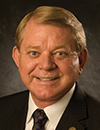Why Won’t Regulators Just Tell Us What They Want?
/ GUEST BLOGGER
GUEST BLOGGER
Daniel Tannebaum, CFE
Head of Compliance - Americas, Travelex and Chief Compliance Officer, Travelex Currency Services Inc.
New York, NY
When I worked for the U.S. Treasury Department, I almost always began my public remarks with the nine most terrifying words in the English language, “I’m from the government and I’m here to help.” Americans always made light of those remarks from President Reagan in 1988, but when did civil servants stop serving the taxpayer and begin to embody that statement?
For all of my adult life I’ve worked in varying compliance roles with the government, in the private sector, back to the government and then ultimately back to the private sector. In all of that time I’ve faced the same question from multiple perspectives: “Just what are the regulators looking for?”
In my role at the Office of Foreign Assets Control (OFAC) I provided guidance and clarification to the financial services industry on how to best comply with OFAC regulations.
In Summer 2005, the five functional U.S. banking regulators (Federal Reserve, FDIC, OCC, OTS and NCUA) joined forces to release a landmark compliance document. The consolidated Federal Financial Institutions Examination Council (FFIEC) Examination Manual, the so-called “bible” of consolidated supervision guidance, was to serve as a critical piece of any institution’s compliance program as now the regulators were using one uniform examination practice. This document contained the key components of all AML compliance programs, something that previously differed from regulator to regulator.
Sounds great, right?
That wasn’t the entire story. As conversations with regulators continued, it became evident that the examination outline laid out in the manual was essentially the bare minimum that a company could do in order to pass an examination. Many compliance officers asked, “But, how could I not only pass, but excel in an examination?” The response typically given is consistent with what most government employees say, “I’m sorry, I can’t help you with that.”
Speaking from personal experience, when I was a compliance officer at OFAC, my department’s mission was that of guidance and clarification. That same team is now charged with “enforcement and case evaluation.” How, within just five years, can a mission so pure and helpful to American businesses change so harshly?
OFAC isn’t alone, as other regulators have seemingly changed their tone, now honing in on enforcement rather than assistance. As we’ve all seen, fines have grown exponentially in the compliance space over the past five years. We’re at the point now that a $1 billion penalty may not have the same impact that an $80 million fine had in 2005.
So back to my original point, why can’t regulators just share with us how we can run clean businesses? It seems relatively counterintuitive as we all try to ensure that our organizations are stable and are providing good product offerings. Why make the relationship more adversarial than is necessary? As I write this article I’m preparing my company to be examined by one state in the union who has given us conflicting requests for the upcoming examination.
And the cycle continues…
Tannebaum will address these questions and more at during his session, “How to Build an Effective AML/OFAC Compliance Program” at the 23rd Annual ACFE Fraud Conference & Exhibition in Orlando, June 17-22, 2012. Already have some thoughts? Share them in the comment box below.
